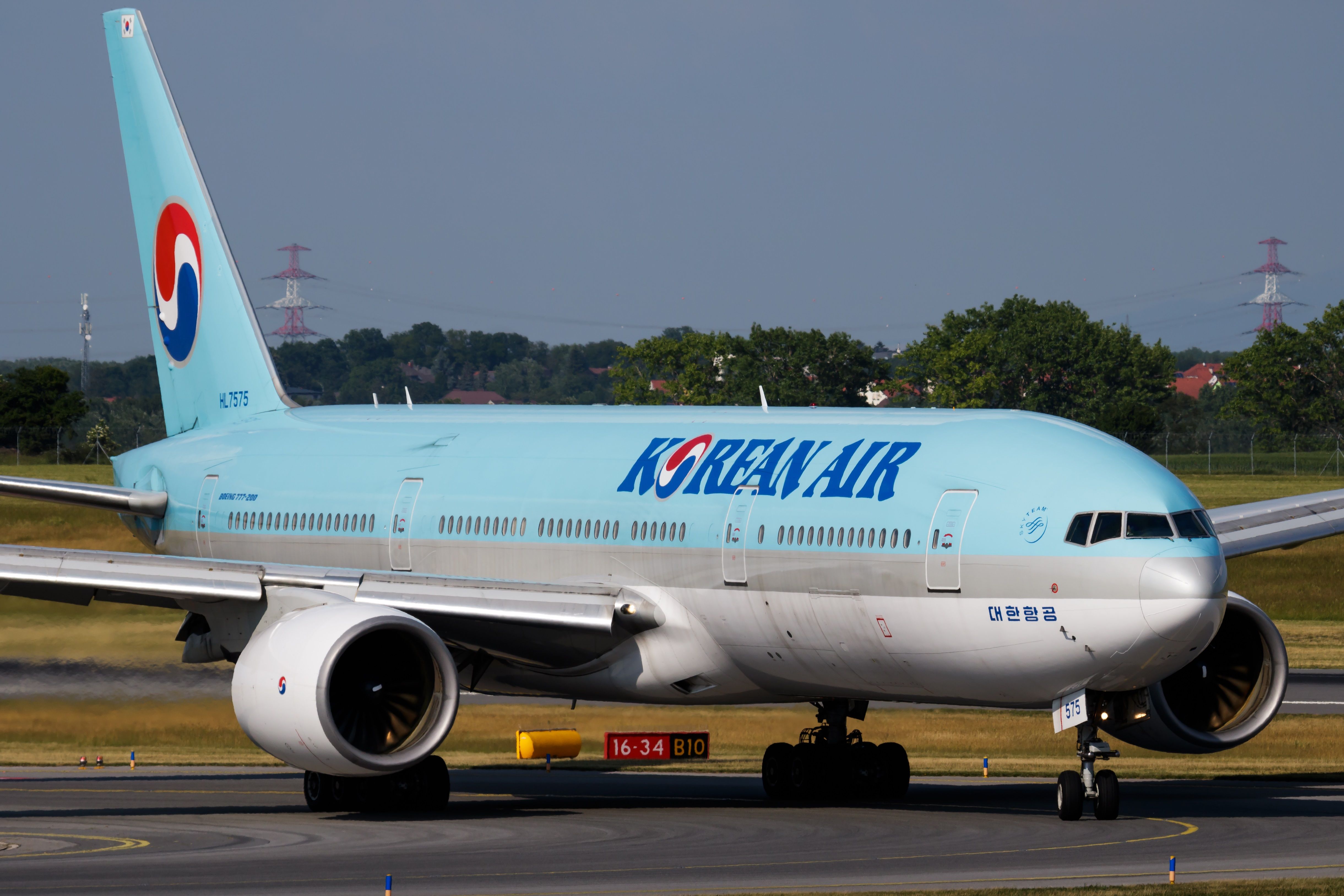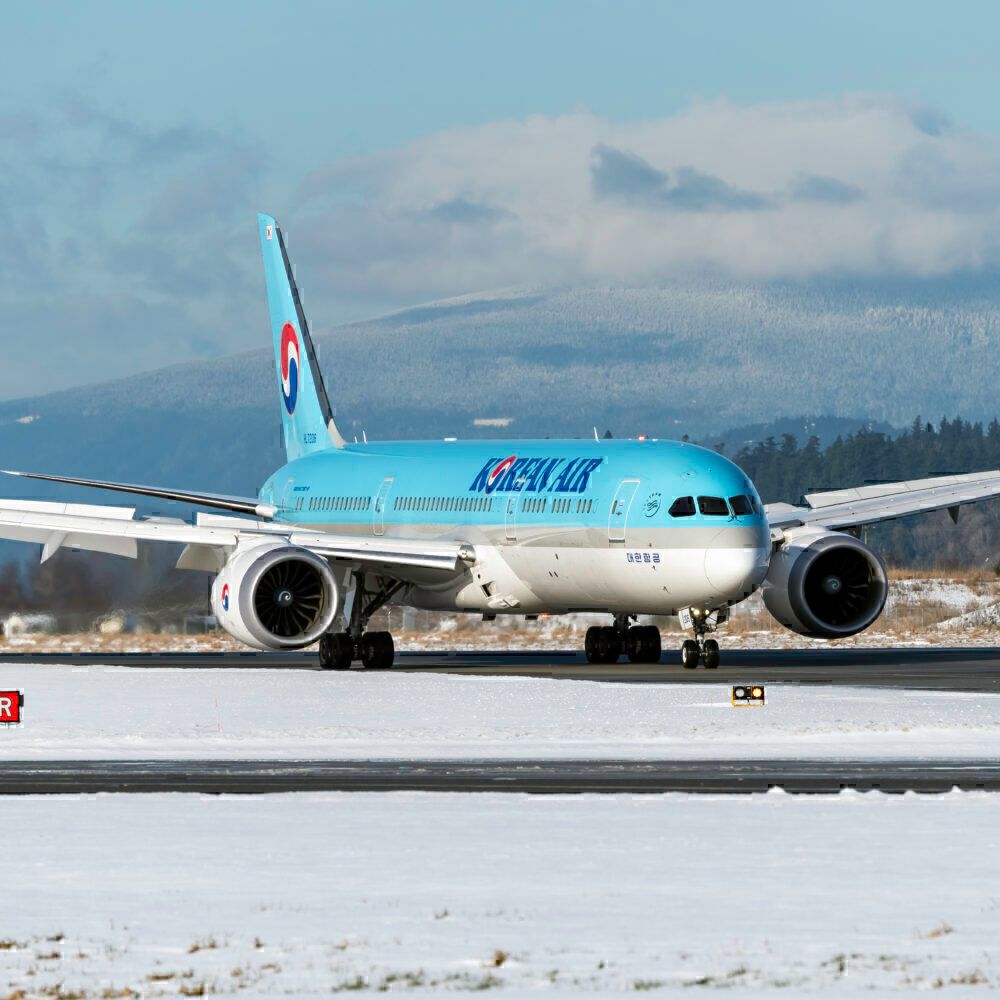Korean Air has increased planned Seoul to Auckland flights to five times weekly. They take effect in the northern summer, so winter Down Under. New Zealand's largest city is one of two routes to Australasia for the SkyTeam carrier, joining Sydney. Here is the latest.
Korean Air grows Auckland
Covering 5,984 miles (9,630km), Seoul-Auckland is equivalent in distance to Munich to Los Angeles and London Heathrow to Cape Town. Taking about 11 hours southbound and half an hour or so longer northbound, Korean Air has grown northern summer flights from four to five times weekly. A 25% increase, it returns the market to its pre-pandemic frequency last held in 2019. It competes against a thrice-weekly offering by Star Alliance's Air New Zealand, which feeds fellow Star member Asiana.
Variously operated by the 777-200ER and 787-9, Korean Air leaves for New Zealand on Mondays, Wednesdays, Fridays, Saturdays, and Sundays. It is scheduled as follows, with all times local:
- Seoul Incheon to Auckland: KE411, 16:50-07:15 (+1) (11h 25m block time)
- Auckland to Seoul Incheon: KE412, 10:15-19:30 (12h 15m)
Click here for Seoul-Auckland flights.
Stay aware: Sign up for my weekly new routes newsletter.
Two-thirds of passengers were local
More informative than simply the number of flights, I enjoy breaking down passenger traffic. According to booking data, Korean Air carried approximately 145,000 Auckland passengers in the entire calendar year 2019, when the airline deployed the 747-8, 777-200ER, 777-300ER (shown below), and 787-9 to Auckland. With 171,000 roundtrip seats for sale, it achieved an average seat load factor of about 85%.
Booking data suggests that most of the 145,000 passengers – more than two-thirds (67%) – were point-to-point between Seoul and Auckland and vice-versa. They didn't go anywhere else, at least not on the same ticket. A high proportion of P2P traffic is desirable, given that it should be the foundation of a long-haul route and is usually higher yielding.
Given the geographic location of South Korea, which is less desirable than other hubs for many so-called traffic flows, it shouldn't be surprising that only about a quarter of passengers transited Seoul. The rest connected over Auckland (5%) or bridged Seoul and Auckland (3%) both.
Discover more aviation news.
Where did transit passengers go?
Analyzing booking data reveals that most of Korean Air's transit markets (XXX-Seoul-Auckland and vice-versa) were small. Like many hubs, the impact was magnified by the accumulation of these markets.
The most popular origin and destination didn't involve an airport in neighboring China or Japan. Instead, the most popular market was London Heathrow-Seoul-Auckland. Connecting in Seoul rather than Singapore is 5% shorter by distance, albeit before the Russia-Ukraine war, which sees Korean Air rerouting to avoid Russia. After London, Busan, Amsterdam, Prague, Osaka Kansai, Frankfurt, Tel Aviv, Paris CDG, Fukuoka, and Vladivostok were the next biggest O&Ds.
Click here for London-Auckland flights.


.jpg)
-Boeing-777-3B5(ER)-HL8010-Vincenzo-Pace.jpeg)
